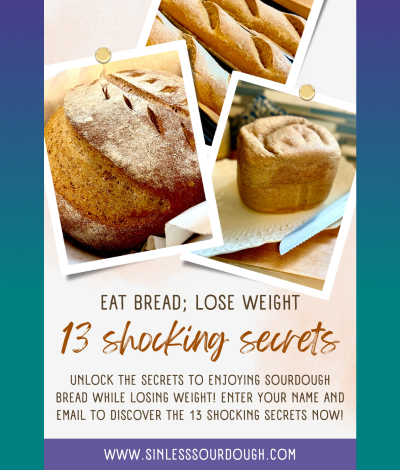KETOGENIC DIET: BEGINNERS ULTIMATE GUIDE
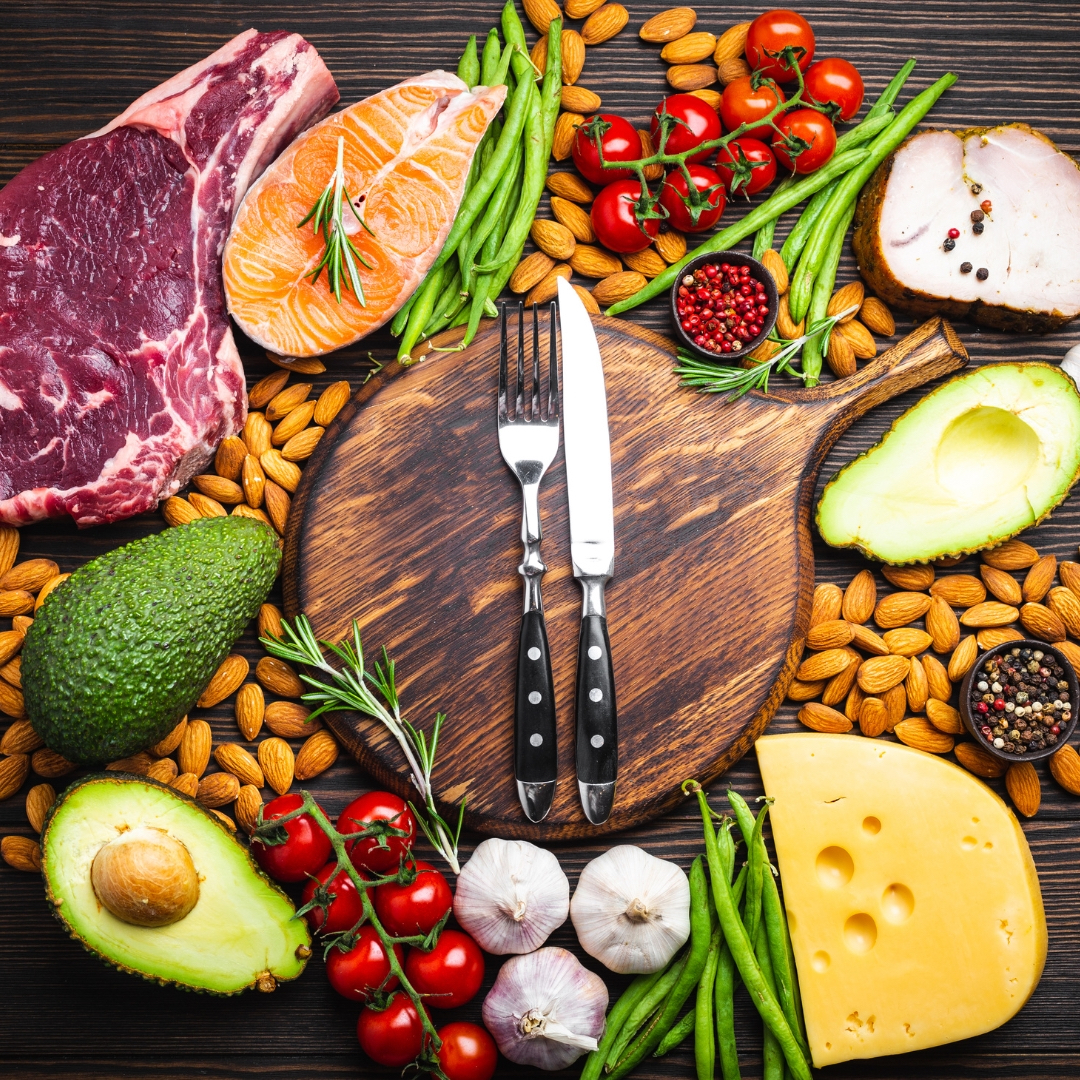
The Ketogenic Diet has moved from a weight loss plan to a way of life. It is a low-carb, high-fat plan for weight loss, but also as a lifestyle choice to heal the body of many ailments. To undertake the Ketogenic Diet, you consume 70-80% fat, 20-25% protein, and 5-10% carbohydrates.
WHAT IS THE KETOGENIC DIET AND HOW DOES IT WORK?
Normally, your body uses carbohydrates you eat as fuel. But if there are few to no carbohydrates, your body must find an alternative source of fuel for energy. Carbohydrate depletion and insulin reduction cause free fatty acids (FFAs) t be released from fat store in the body. This process is called lipolysis. Then the free fatty acids are transported to the liver where they are used to produce ketone bodies.
This is known as endogenous ketosis. Ketones are produced by your body. Your body goes into a state of ketosis and the ketones break down the fat for energy, a cleaner fuel for energy. With the fat in your body being used as an energy source, you will begin to lose weight and gain health benefits. It’s important that you speak to your health care provider or doctor before beginning the Ketogenic Diet.
WHAT ARE THE HEALTH BENEFITS OF THE KETOGENIC DIET:
Developed in the 1920s, the Ketogenic Diet helped control seizures in patients with epilepsy. This diet then gained popularity as a weight loss tool. Since then, research and studies show that this diet also improves health and helps reduce and eliminate other ailments. Some of the health benefits reported by the Ketogenic Diet include:
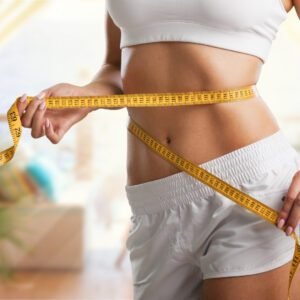
WEIGHT LOSS ON THE KETOGENIC DIET
Weight Loss:
Causing your body to burn fat for fuel instead of carbohydrates leaving to weight loss.
Better Heart Health:
By lowering risks of heart disease, such as high blood pressure, cholesterol, and triglycerides.
Reduced Inflammation:
Reducing inflammation linked to a variety of chronic diseases.
Increased Energy:
Increasing your energy from the fat you eat providing a stable source of energy.
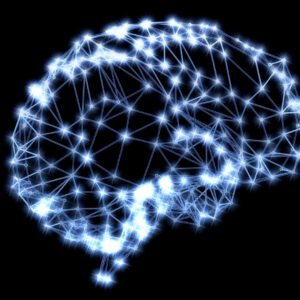
Improving brain function is one of the many benefits of the Ketogenic Diet
Better Brain Function:
Improving cognitive function and memory.
Lowered Blood Sugar:
Helping lower blood sugar and insulin levels, making it an effective treatment for type 2 diabetes.
Reduced Risk of Cancer:
Reducing the risk of certain types of cancer, including prostate and colon cancer.
Skin Health:
Reducing inflammation and regulating hormones helps with acne and other skin conditions.
Reduced Risk of Epileptic Seizures:
Used by doctors as a treatment for epilepsy seizures.

IMPROVING GUT HEALTH WITH KETOGENIC DIET
Enhancing Gut Health:
Lowering inflammation and fostering the growth of good gut bacteria.
WHY ARE THERE DIFFERENT VERSIONS OF THE KETOGENIC DIET?
Every person has individual needs and goals. It’s important to try a traditional ketogenic diet first. Once you experience the ketogenic process first, you can stick to the standard diet or choose a variation based on your needs.
Here are a few of the Ketogenic Diet variations:
Standard Ketogenic Diet:
- For general weight loss
- 55-75% fat
- 15-35% protein
- 0-10% carbs
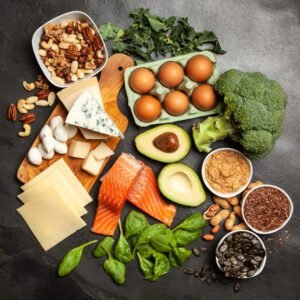
Whole Foods in the Ketogenic Diet
Clean Ketogenic Diet:
- Those who can cook at home.
- A focus on quality of food, such as grass-fed, cold-pressed olive oil
- Focus on whole foods.
- Focus on organic.
- No Keto processed foods.
High Protein Ketogenic Diet:
- For bodybuilders
- 75% fat
- 15-20% protein
- 10% carbs
Cyclical Ketogenic Diet:
- For those who struggle with Ketogenic Diet.
- Adhere to standard Keto for 5 to 6 days (less than 50 grams carbs per day).
- followed by 1 to 2 days of higher carb eating (roughly 150 grams per day).
- May not be advantageous for weight loss.
Targeted Ketogenic Diet:
- High endurance athletes (running, swimming, tennis) or body building.
- Falls between Standard and Cyclical.
- On TKD days about 30 to 45 minutes before exercise, consume just enough “fast absorbing carbs” to perform intense exercise.
- Types of fast digesting (simple) carbs are important. They do not contain fiber, fat or protein and are high-glycemic foods.
- Examples include apple sauce, sports drinks, pears, dried fruit, figs, bananas, mango, pineapple.
Lazy Ketogenic Diet:
- Those interested in low-carb diet without tracking macros
- Staying below 50 net carbs per day
- Good for weight maintenance
Dirty Ketogenic Diet:

Jalapenos Stuffed with Cheese and Bacon on Dirty Ketogenic Diet
- Those with lack of time and need convenience
- Difference is the source of fat – cheese, pork rinds, bacon
Keto 2.0 Diet
- For those who desire plant-based living
- Carbs more relaxed (20%) of macros which can impede fat burning
- Plants comprise bulk of calories
- Lots of olive oil, coconut oil, avocados, nuts
Keto-Med (Mediterranean)
- For those who want whole foods
- More fish and seafood, less red meat (lower saturated fats)
- Lots of healthy fats
- Good for heart health
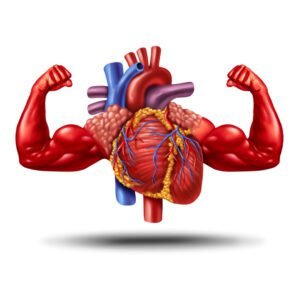
Heart Health on of the many benefits of Ketogenic Diet
Keto Heart Healthy
- For those focused on heart health.
- A combination of Clean Keto, Keto-Med, and Keto 2.0.
- Net carbs remain low.
- Focus on foods with healthy fats (Omega-3).
- Eat red meat sparingly and is grass-fed.
- Low to no alcohol.
- Includes fermented foods.
- Teas high in anti-oxidants, such as Green Tea.
- More fish and seafood as protein sources.
- More plant-based dishes.
- Includes foods from Japan, Mediterranean
WHAT DO WE NEED TO KNOW ABOUT CALORIES ON THE KETOGENIC DIET?
On the Ketogenic Diet, you must track your caloric intake. Calories play a crucial role in determining your success. Remember, the idea is for your body to go into a state of ketosis to burn fat for energy. Consuming too many calories, even if they are from healthy fats, can still result in weight gain. Therefore, it is important for you to track your calories, along with your macros.
WHAT ARE MACROS?
In the Ketogenic Diet, macronutrients are referred to as “macros”. Macronutrients fall into 3 groups. They are carbohydrates, proteins, and fats. Each macro serves a different purpose in the body and provides a different amount of energy per gram.
The typical macro breakdown is:
- 5-10% carbohydrates
- 20-25% protein
- 70-75% fat
Every person has their own macro breakdown depending on their age, height, weight, weight loss goal, exercise requirements, etc.
Carbohydrates:
Carbohydrates are the body’s primary source of fuel. Carbs can be simple (high sugar fruits) or complex (foods with carbs and fiber, like broccoli, butternut squash). Complex carbs are more nutritious. The Ketogenic Diet always limits carbohydrates. The amount of carbohydrates you consume will depend on your current weight and goals.
Proteins:
Foods like meat, fish, and eggs are sources of proteins that are essential for building and repairing tissues. If you eat too much excess protein, your body will convert the protein into glucose through a process called gluconeogenesis. This can cause your body to produce insulin and kick you out of ketosis. Consuming too much protein can put a strain on the kidneys. Your kidneys filter out waste products that come from protein metabolism. The amount of protein you eat will also depend on your current weight and goals.

Beef, chicken, fish part of the Ketogenic Diet
Fats:
Fats are important for hormone production, insulation, and energy storage. There are 4 types of fats. They are monounsaturated, polyunsaturated, saturated, trans fats. On the Ketogenic Diet, you can consume saturated fats. If you have heart problems, it’s important to eat mostly healthy fats like monounsaturated and polyunsaturated fats. Almonds, cashews, peanuts, walnuts, sesame seeds, sunflower seeds, avocados, salmon, olive oil are all sources of healthy fats.
- Omega 6 Polyunsaturated
- Omega 3 Polyunsaturated
Saturated: cheese, butter, cream, coconut oil, palm oil, lard
Trans:
hydrogenated oil, margarines
HOW DO I CALCULATE MY OWN MACROS?
To calculate your individual macro breakdown, you’ll need to first determine your daily caloric needs. Once you have your daily calorie intake, you can then calculate your macronutrient ratios. (If you are more active, you may need to adjust your macros to ensure you are getting enough energy to fuel your workouts.)
Using an online calculator or consulting with a registered dietitian or nutritionist to figure out your macro breakdown. Here is an excellent keto calculator:
RULES ME KETO CALCULATOR
WHAT ARE THE FOODS I CAN EAT ON THE KETOGENIC DIET?
Some foods to eat on the ketogenic diet include:
Meats:
Beef (grass-fed for Keto heart healthy), lean pork, chicken, turkey, lamb, wild meats (venison, buffalo, elk, moose are low in saturated fat except for bear).
Fish and Seafood:
Salmon, tuna, Tilapia, arctic char, sardines, tuna, shrimp, mussels, lobster, crab, scallops
Tofu:
Firm, medium firm, soft made from coagulated soy milk
Tempeh:
Made from fermented soybeans
Low-carb vegetables:
Leafy greens, spinach, broccoli, cauliflower, asparagus, mushrooms, Brussels sprouts, bell peppers, carrots, cabbage, tomatoes.

SPIRULINA FOR KETOGENIC DIET
Algae:
Spirulina is an algae grown in salt or fresh water
Fruits:
Avocado, olives, tomatoes, raspberries, blackberries, blueberries, tomatoes.
Nuts and Seeds:
Almonds, walnuts, chia seeds, flaxseeds, sunflower seeds, pumpkin seeds.
Nut and Seed Butters:
Almond butter, peanut butter, cashew butter, sunflower seed butter,
Dairy:
Butter (grass-fed for Keto Heart Healthy), cream (grass-fed for Heart Healthy), yogurt, Kefir, fresh cheeses such as cottage cheese, ricotta, feta, cream cheese; fatty cheeses like cheddar, mozzarella, parmesan).
Non-Dairy:
Almond milk, cashew milk, coconut milk
WHAT ARE THE FOODS I SHOULD AVOID ON THE KETOGENIC DIET?
Some foods you should avoid on the Ketogenic diet are as follows:
Sugary Foods:
candy, desserts, pastries
Grains:
bread, pasta, rice
Starchy Vegetables:
potatoes, sweet potatoes
High Sugar Fruits:
mango, bananas, pineapple
Beans and Legumes:
chickpeas, kidney beans, black beans, lentils
Low-Fat or Diet Products:
low-fat milk (that’s not low-carb), low-fat dairy (that’s not low-carb), low-fat yogurt (that’s not low carb).
Processed Keto Foods:
packaged cakes, cookies, cereal
Sauces:
ketchup, teriyaki, BBQ sauce, sweet chili, hoisin
High-Carb nuts and Seeds:
cashews, pistachios
WHAT ARE THE MOST IMPORTANT THINGS I SHOULD DO ON THE KETOGENIC DIET?
The most important steps you should take when undertaking the ketogenic diet include:

Before doing the Ketogenic Diet consult your health provider or doctor.
- Consult your doctor first before beginning to make sure this diet is safe for you.
- Watching for hidden sugars.
- Watching overall calories and staying within your limit.
- Not staying hydrated can cause the Keto flu.
- Cheating which causes cravings.
- Not getting enough sleep which can cause cravings.
HOW DO YOU GET INTO KETOSIS WITHIN 24 HOURS ON THE KETOGENIC DIET?
There are 2 ways to move your body into a state of ketosis They are fasting and exercise. Be sure to speak to your healthcare provider or doctor before fasting.
Fasting is an effective way to help go into a state of ketosis quickly. This can be a process you undertake before you begin the Ketogenic Diet or if you have cheated and consumed too many carbohydrates. Fasting is the only way to deplete your body’s glucose supply in such a short time frame. If you want to get into ketosis fast or recover from a mistake, you can fast for 24 hours. Again, speak to your healthcare provider or doctor before fasting.
Engaging in exercise can help to burn the glucose in your body. Take part in high-intensity cardio, interval training, or resistance training. Exercise helps the body to deplete the stored glucose (the carbs you’ve eaten) and make ketones. Slowly add exercise into your daily regime.
WHAT IS INTERMITTENT FASTING?
Intermittent fasting means alternating between periods of eating and fasting. There are many variations in this approach. The most common method involves restricting food for a specific number of hours per day. Typically, the fast can last as long as 16 hours and allowing for 8 hours to eat. This is known as the 16/8 method. You can also restrict food for a certain number of days. One popular method is 5:2 method. Within this approach, you eat normally for 5 days and restrict calories for 2 days.
Remember that intermittent fasting is not a solution for weight loss. However, it can contribute to any program you are undertaking, like the ketogenic diet. As always, be sure to talk to your doctor before starting this routine.
WHAT ARE THE BENEFITS AND RISKS OF INTERMITTENT FASTING ON THE KETOGENIC DIET?
There are many benefits to intermittent fasting while doing the ketogenic diet.
They include:
- Moving into ketosis more quickly
- Mental clarity
- Better exercise performance
WHY IS HYDRATION IMPORTANT ON THE KETO DIET?

Electrolytes important onl Ketogenic Diet
You must focus on staying hydrated. When you eliminate carbs, your body produces less insulin, signaling your kidneys to release excess water. This can cause water weight loss in the first few days of the diet. For this reason, you must stay hydrated to flush out the toxins so your kidney’s function properly.
Aim for at least 8 glasses of water a day, and more if you’re exercising or in a hot or tropical climate. Drink herbal teas, bone broths, and other sugar-free beverages to help you stay hydrated.
WHAT IS AN ELECTROLYTE IMBALANCE AND THE KETO FLU?
Electrolytes are minerals that help regulate important bodily functions, such as muscle contractions, your heart rhythm, and fluid balance. The most common electrolytes in your body are sodium, potassium, calcium, and magnesium. An electrolyte imbalance can cause the Keto flu. When electrolyte levels are imbalanced, you can experience symptoms, such as irritability, exhaustion, fogginess, muscle weakness, nausea, confusion, and an irregular heartbeat.
Electrolyte imbalances can be caused by a variety of factors, such as dehydration, kidney disease, hormonal imbalances, or certain medications.
Electrolyte drinks are important for those following the Ketogenic Diet as they replenish the electrolytes lost during the transition to ketosis. You can buy sugar-free electrolyte drinks (electrolyte powder). However, be sure to read the label to know what sweetener is used. Sweeteners can kick some people out of ketosis.
Preservatives and sweeteners can be avoided by making your electrolyte drink at home. You will need water, lemon juice, Himalayan salt, and a natural sweetener like stevia (optional).
Electrolyte Drink Recipe:
4 cups of water
1/4 cup of freshly squeezed lemon juice
1/2 tsp of Himalayan salt
1-2 packets of stevia (optional)
Instructions:
In a mixing bowl, add 4 cups of water. Add in 1/4 cup of fresh lemon juice to the water. Measure 1/2 tsp of Himalayan salt and add it to the water. Add 1-2 packets of stevia to taste (optional). Mix the ingredients well until the salt has dissolved completely.
Pour the mixture into a pitcher and refrigerate for 30 minutes. Stir the mixture well before serving. This drink will provide your body with minerals and vitamins lost during the transition to ketosis.
WHY DOES YOUR BREATH SMELL WHEN YOU ARE IN KETOSIS?
When in the state of ketosis, you excrete ketones through your urine and breath. The process can make your breath smell different. Some people have said their breath smells like nail polish remover or fruity.
WHAT WILL KICK YOU OUT OF KETOSIS?
Certain factors can kick you out of ketosis, including consuming too many carbohydrates, alcohol, too much protein, some artificial sweeteners, and foods with hidden sugars.
IN WHAT FOODS WILL YOU FIND HIDDEN SUGARS?
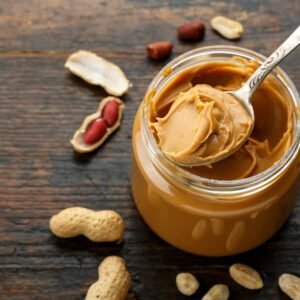
Watch for hidden sugars on Ketogenic Diet
Many foods can have hidden sugars, so always read nutritional labels before consuming these foods. Some of the foods with hidden sugars include:
- Sauces and condiments such as ketchup, BBQ sauce, and salad dressings.
- Cereals and granola bars
- Yogurt
- Energy bars, protein bars, and trail mix
- Alcoholic beverages
- Some sports drinks and electrolyte replacement drinks
- Fast food burgers
- Peanut Butter
- Mayonnaise
HOW DOES EXERCISE EFFECT THE KETOGENIC DIET?
The transition from burning glucose to burning ketones as your primary fuel source can be difficult. The reason is that your glycogen stores decrease, and your body feels like it’s running out of energy. It’s important that you approach exercise with some caution.
If you forget to stay hydrated and forget to balance your electrolytes, exercising can make Keto symptoms worse. Begin exercise slowly and with caution until you can figure out what your body needs to remain energized.
WHAT ARE THE RISKS OF THE KETOGENIC DIET?
One of the main risks of the ketogenic diet is the possibility of developing ketoacidosis. This means the body thinks it is in starvation mode and begin to break down fats and proteins too quickly. It can be a potential complication of type 1 diabetes.
Symptoms of ketoacidosis include:
- Nausea and vomiting
- Stomach pain
- Trouble breathing
- Bad mouth odor
- Confusion
- Loss of consciousness
Again, the ketogenic diet may not be suitable for you. It is important to speak with your health provider or doctor before starting any new diet to ensure that it is safe for you.
WHAT ARE EXOGENOUS KETONES AND HOW DO THEY AFFECT THE KETO DIET?
Exogenous ketones are typically made from beta-hydroxybutyrate (BHB), which is the most abundant ketone in the body. When consumed, exogenous ketones can help to raise blood ketone levels, which can provide many potential benefits, such as increased energy, improved mental clarity and focus, and reduced appetite. While exogenous ketones can be useful for people following a ketogenic diet. It’s important to know that exogenous ketones do not act like ketones produced by the liver.
Taking exogenous ketones will not cause weight loss. However, they support your Ketogenic Diet by helping to curb your appetite and cravings.
For more information on Exogenous Ketones click the link below:
WHO SHOULD NOT UNDERTAKE THE KETOGENIC DIET?
People with certain medical conditions should not do the ketogenic diet.
Some of these include:
- Eating disorders
- Diabetics
- Liver issues
- Pancreatic disease
- Gallbladder problems
- Pregnant
- Breastfeeding
Remember to talk to your health provider or doctor first before beginning the ketogenic diet.
WHAT ARE SOME OTHER GUIDES YOU NAY WANT TO CHECK OUT?
KETO GUMMIES FOR WEIGHT-LOSS; ULTIMATE GUIDE
APPLE CIDER VINEGAR FOR WEIGHT LOSS; ULTIMATE GUIDE
KETO GUMMIES FOR WEIGHT-LOSS; THE ULTIMATE GUIDE
CASTOR OIL; THE ULTIMATE GUIDE
- UNUSUAL KETO INSTANT POT RECIPES FOR 2025 - April 27, 2025
- Boost Your Keto Diet with These Non-Alcoholic Wine Hacks - April 27, 2025
- 10 Unique & Healthy Mocktails You Need to Try - April 27, 2025


